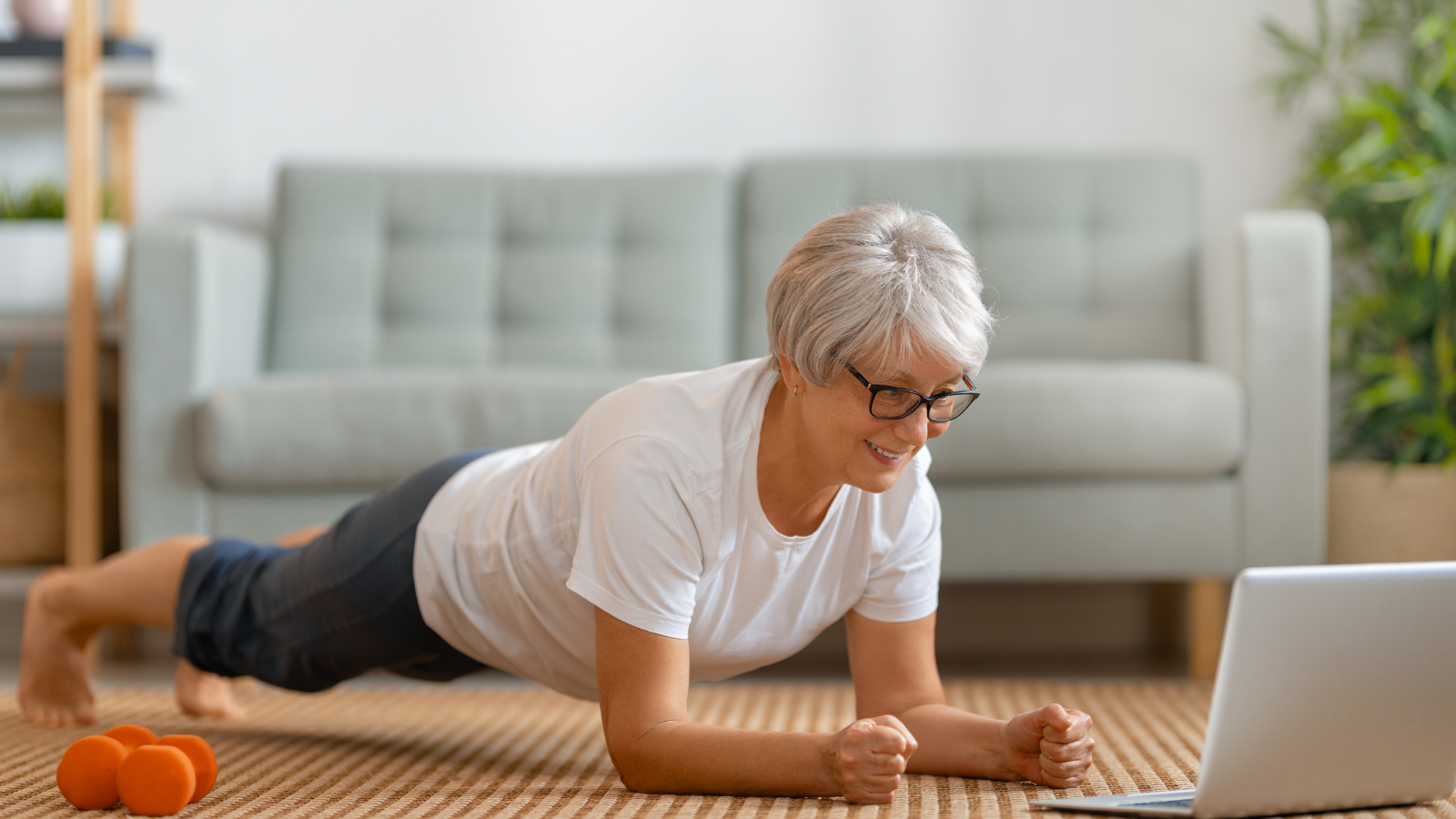How and Why to Integrate Your Shoulders in Weight-Bearing Yoga Poses

Our shoulders are incredibly mobile. This is great news for us. Their extreme range of motion allows us to freely swing our arms about. We can reach over our heads to grab dishes from the top cabinet. We can reach behind us to scratch our backs. Most of us can even cross our arms in front of ourselves and wrap them back around each other three times to find Garudhasana (Eagle Pose). (Eagle Arms shown below)

The “shoulder joint” as we know it is actually a very complex shoulder girdle comprised of three separate joints: the sternoclavicular joint, the acromioclavicular joint, and the glenohumeral joint (which is the joint we’re typically referencing when we speak about the “shoulder”). Many would also argue that the scapulothoracic joint is also involved in the shoulder complex (which it certainly is); however, this is not a “true” joint by definition. (1) But, its movement capabilities are still important to dissect.
Because there is so much happening at the shoulder girdle and because the shoulder girdle is so mobile, it is important to stabilize the shoulders whenever we bear weight in the arms. By actively engaging the musculature that surrounds these mobile joints, we can support the joints themselves and all of their protective layers (such as joint capsules, cartilage, ligaments, tendons, fascia, and other connective tissues).
This stabilization will help to keep the health and integrity of the joints so that we can continue to practice our beloved yoga in the long run.
A Quick Look at the Shoulder Structure

The shoulder girdle is really the connection of four separate bones:
- The sternum (breastbone)
- The clavicle (collarbone)
- The scapula (shoulder blade)
- The humerus (upper arm bone)
Again, many would also argue that the connection of the scapulae to the ribcage is also an intricate part of the shoulder complex. All of these bones articulate to create our very complex shoulders.
The acromion process (a part of the scapula) meets the clavicle at the acromioclavicular (AC) joint. No muscles act directly on this joint, so all movement here is passive and is initiated by movement at another nearby joint. (2) Therefore, we don’t have to worry so much about stabilizing this joint, in particular, if we do the necessary work to stabilize the surrounding joints.
Contrarily, the sternoclavicular (SC) joint (where the sternum and the clavicle meet) allows a great deal of motion. But, while there is more movement available here, this joint has both extremely strong ligaments and an extremely strong joint capsule to inherently allow for some stability. (3)
However, the glenohumeral joint is a different story. This is a classic ball-and-socket joint. The humerus (the upper arm bone which creates the “ball”) sits precariously inside the glenoid fossa (a depression within the scapula that creates the “socket”).
Unlike the very deep and stable socket in our hips, the socket of the glenohumeral joint is quite shallow. This allows for a greater range of motion but at the cost of stability. A common analogy for this joint is the image of a golf ball sitting on a tee.
So, to create stability at the glenohumeral joint, we need to recruit the help of supporting muscles. There are many muscles that work to stabilize and move the shoulders, but some of the biggest players here are:
- Scapular stabilizers (rhomboids and serratus anterior)
- Humeral stabilizers (the rotator cuff, including subscapularis, supraspinatus, infraspinatus, and teres minor)
- Deltoids
- Pectorals
- Trapezius
In order to completely secure and stabilize the very mobile shoulders, we have to support the shoulder girdle equally from all sides. This means that we must engage these supporting muscles equally to create tensile “pulls” in opposing directions to perfectly integrate the humerus into the glenoid fossa.
How to Stabilize the Shoulders in Yoga
Because the scapula is closer to the core of the body, it must be stabilized first. Second, down the chain, the humerus needs to be stabilized next. 
To stabilize the scapula, we need to fire both scapular stabilizers equally. To do this:
- Actively press the floor away until your upper back rounds ever so slightly. This will primarily activate the serratus anterior (which works to draw the shoulder blades apart).
- Maintain this and counter it by slowly releasing your chest toward the floor like an elevator. This will subtly draw your shoulder blades back toward each other to primarily activate your rhomboids.
Next, stabilize your humerus. The rotator cuff works as a congruous whole to juggle the position of the humerus in the glenoid fossa. Collectively, the entire rotator cuff works to “plug” the humerus into the shoulder socket. To do this:
- Plug your upper arm bones in toward your shoulder sockets as if sipping up on a straw.
Now that you’ve stabilized your shoulder blades on your back and positioned your humerus into the socket, you can layer on the bigger, more superficial muscles surrounding the shoulders to keep them stabilized. 
- Without movement, energetically draw your arms toward each other as if trying to squeeze the fabric of your mat together. This eccentric adduction and subtle internal rotation will primarily fire up your anterior deltoids and pectorals.
- Maintain this, and very subtly broaden your chest as if trying to make your collarbones smile. This subtle external rotation of your upper arms and adduction of your shoulder blades will primarily engage your posterior deltoids and middle trapezius.
The Takeaway on Shoulder Integration
It’s important to keep in mind that the majority of muscles that we work with to stabilize the shoulder girdle are just that—deep, stabilizing muscles. This is important to note because they are not prime movers. And because of this, the subtlety and finesse of these movements are crucial. If you start to initiate large movements, your larger, more superficial prime mover muscles will take over.
So, as you stabilize the shoulder girdle, move with extreme subtlety. These movements should almost be invisible to the eye. 
First, try these options without weight bearing (so simply with your arms extended forward in space from a seated or standing position) and then eventually add more weight. Start slowly, maybe in Bharmanasana (Tabletop Pose). Then work your way up to add more weight in Phalakasana (Plank Pose) (the photo above is Forearm Plank) or Chaturanga Dandasana (Four-Limbed Staff Pose).
By stabilizing your shoulders when you bear weight in your arms, you can maintain the health and integrity of these joints for years to come so that you can continue to practice yoga for a lifetime.
Also, read...
In Celebration of Gray-Haired Yoga – Busting the Myth of the Yoga Body
Stand Firm: 6 Easy Balancing Moves for Your Daily Yoga Routine
Related courses

Leah Sugerman is a yoga teacher, writer, and passionate world traveler. An eternally grateful student, she has trained in countless schools and traditions of the practice. She teaches a fusion of the styles she has studied with a strong emphasis on breath, alignment, and anatomical integrity. Leah teaches workshops, retreats, and trainings, both internationally and online. For more information, visit www.leahsugerman.com.



